Because sometimes, “calm down” is the last thing a child can actually do.
We’ve all said it. Maybe whispered it. Maybe shouted it ourselves. But in the heat of a child’s big feelings, especially when the volume rises and voices echo, saying “calm down” often lands flat. Not because we don’t mean well, but because a dysregulated child can’t access calm until we help them feel safe and seen first.
In our previous article, we explored what’s going on in the brain during a meltdown, and how co-regulation and calm-down spaces can help. Now, let’s go further. What do we actually do when a child expresses big feelings by yelling or acting out of control, and we’re teetering on the edge too? Let’s step beyond the default response and explore empathetic, innovative ways to support a shouting child.
Respectful Strategies: Say Less, Do More
When a child is shouting, their brain is likely in survival mode. Logic is offline. Instead of reasoning, they need regulation. That means grounding, sensory input, and emotional safety. Try:
- Get lower: Physically lower yourself to the child’s level. This reduces perceived threat.
- Mirror calm with your body: Soften your shoulders, lower your voice, and slow your breathing while acknowledge their big emotions.
- Use few, grounding words: Try “You’re safe.” or “I’m here.”
- Offer choices, not commands: “Would you like to sit here or there while we breathe together?”
- Use visual cues: Point to a breathing card or hold up fingers for slow inhales and exhales.
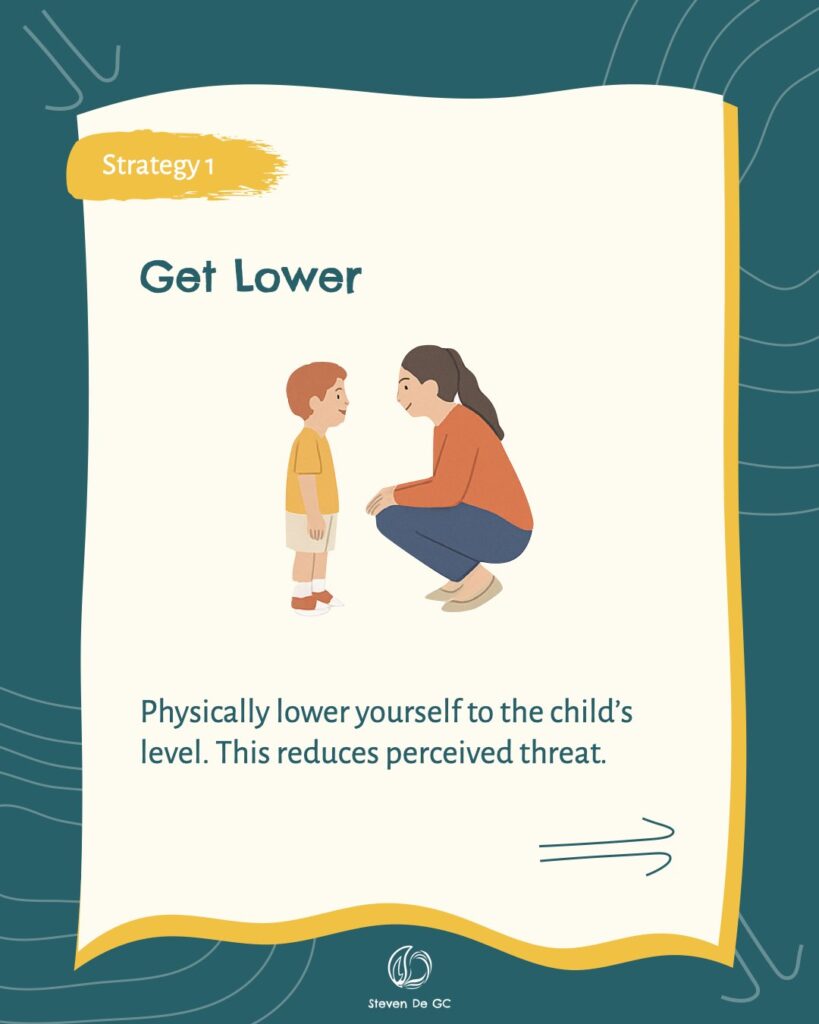
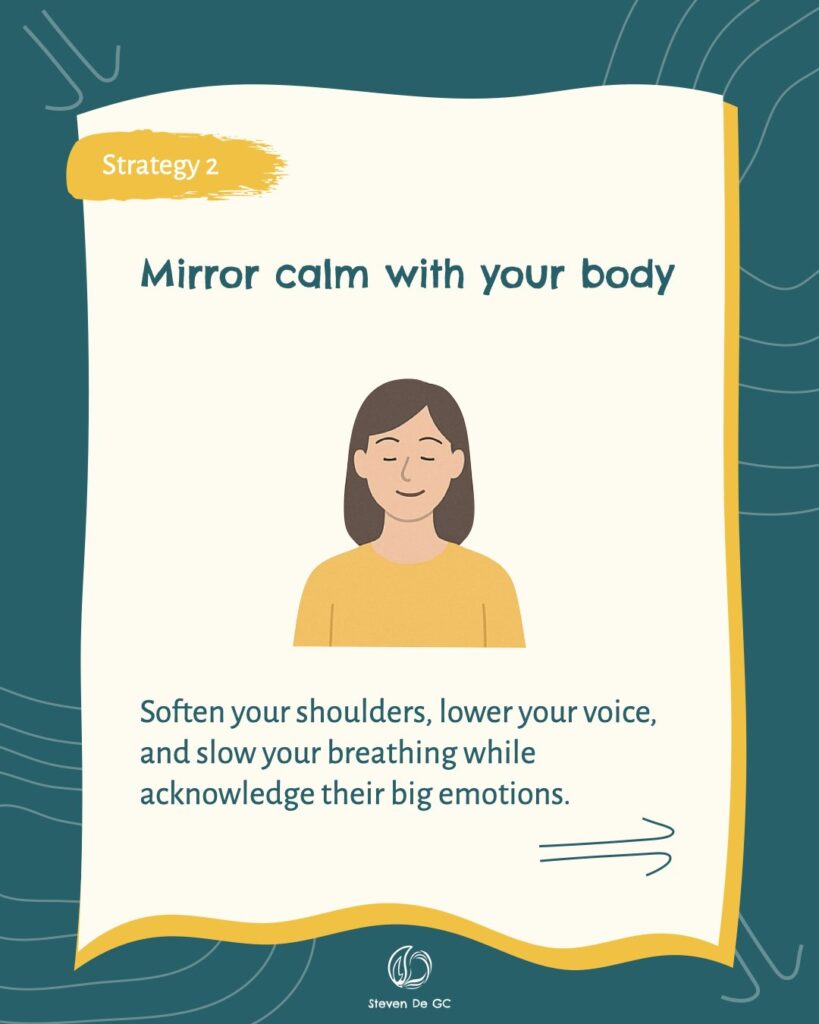
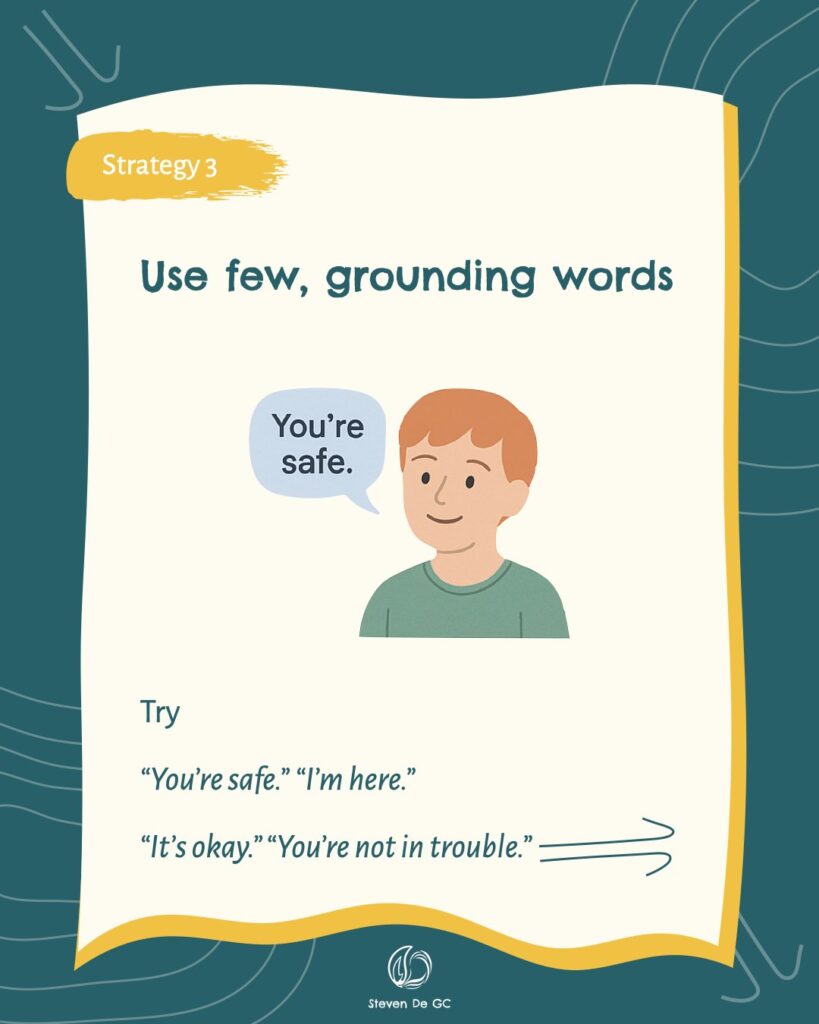
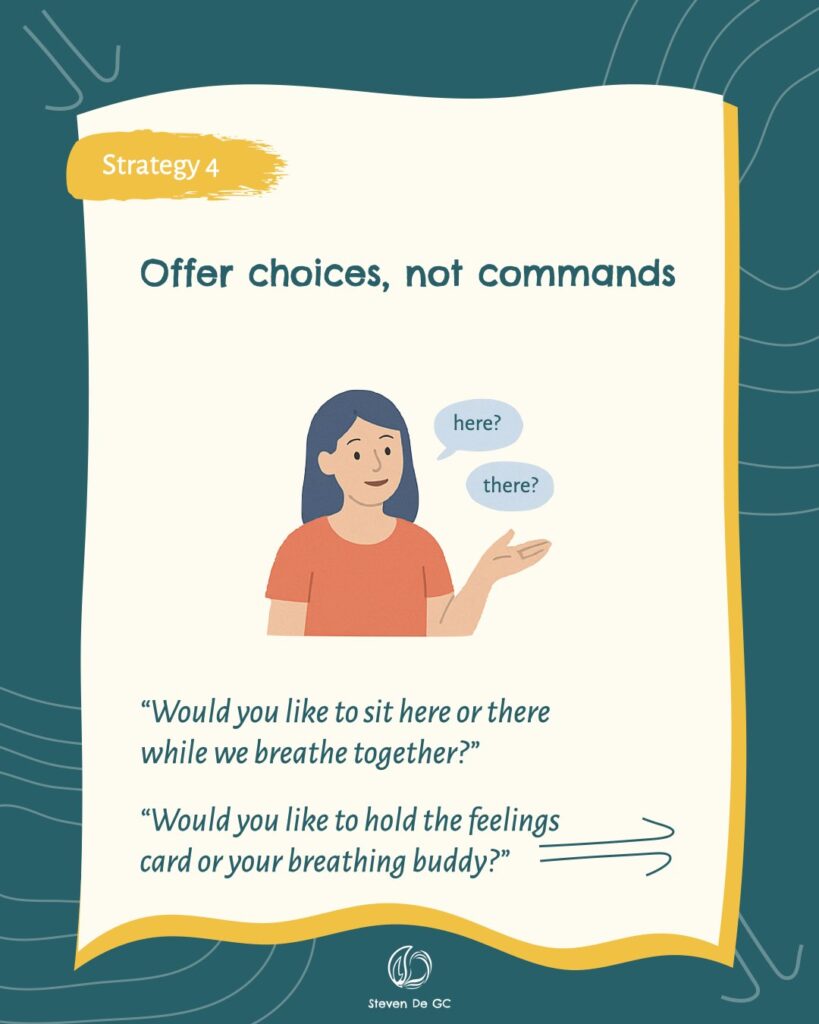
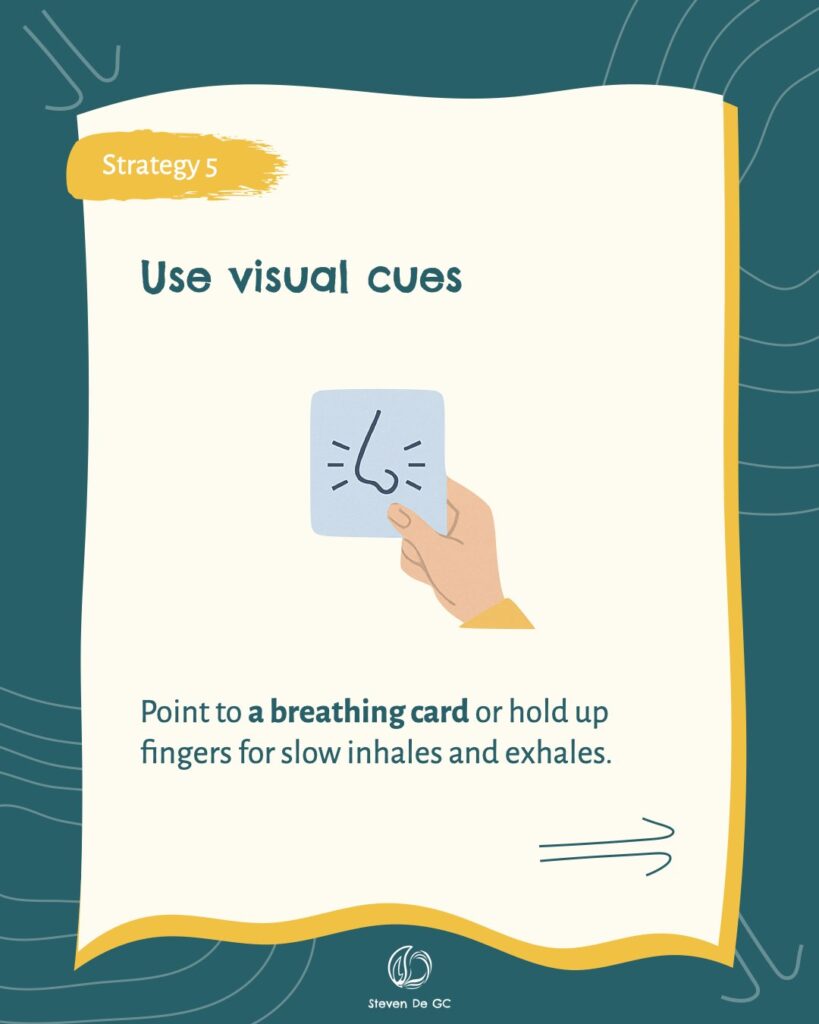
Tool idea: Carry a “Calm Kit” — a small pouch with sensory tools, a familiar photo, and a feelings fan for quick, non-verbal support.
Not All Shouting is The Same
Just like adults, children have different nervous systems, personalities, and needs. The same shouting behaviour can have very different roots, and therefore, needs very different responses.
- The Justice Fighter
- Why they shout: Perceived unfairness or inconsistency.
- What helps: Validating their feelings, offering choices, explaining reasons when calm.
- The Overwhelmed Reactor
- Why they shout: Sensory overload, emotional flooding.
- What helps: Low-stimulation spaces, minimal talking, soft textures, predictable routines.
- The Shutdown Escaper
- Why they shout: To avoid fear, shame, or internal pain.
- What helps: Safety, soft tone, permission to feel, quiet re-entry to connection.
- The Connection Seeker
- Why they shout: Feels unseen, wants attention or proximity.
- What helps: Eye contact, one-on-one time, naming their need gently: “You wanted me to hear you.”
Reflection prompt: What profile(s) do you recognise in your child or student? How might that shift your response?
The Adult Work (When We’re the Volcano)
It’s hard to meet a storm with stillness, especially when you feel judged, exhausted, or triggered. But supporting a shouting child often starts inside us.
Children learn emotional responses by watching the adults around them. If they regularly see adults use loud voices, snapping, or speaking harshly, especially to each other, they begin to internalise those patterns as normal. In other words, they mirror what they see.
That’s why doing the adult work matters. Try:
- Pre-loading calm: Before the chaos hits, practise breathwork or grounding. Even one minute helps.
- Having a plan: Write down what helps you regulate, and put it somewhere visible.
- Debrief with honesty: After a tough moment, say, “That was hard for both of us. I lost my calm too, but I still love you.”
- Reflect without blame: Journal or think about how you responded. Was it helpful? Could something else have worked better? Don’t self-blame. We’re all learning. Your effort to grow matters.
Story Spotlight: The Shouting Girl

Understanding emotional outbursts is one thing, helping children understand their own shouting is another. That’s where The Shouting Girl by Steven Huynh becomes a good resource. This picture book gently unpacks what we and a child can do when they yell or lash out. Through a relatable storyline and vivid illustrations, it shows children that big feelings are not bad feelings and there are better ways to handle them.
Why it fits here:
- It mirrors the respectful strategies shared in this article.
- It provides teachers and parents with language and imagery to discuss shouting without shame.
- It supports SEL (social and emotional learning) goals across lower primary classroom, from aged 5 to 8.
🧰 Use it in class or at home with linked resources
A Final Word
Empathy doesn’t mean allowing shouting to continue unchecked. It means recognising that behind the behaviour is a need. And often, a child who feels out of control in their body or heart. By responding with calm strategies, tailored insight, and self-awareness, we teach something far more powerful than “calm down.” We teach respect!



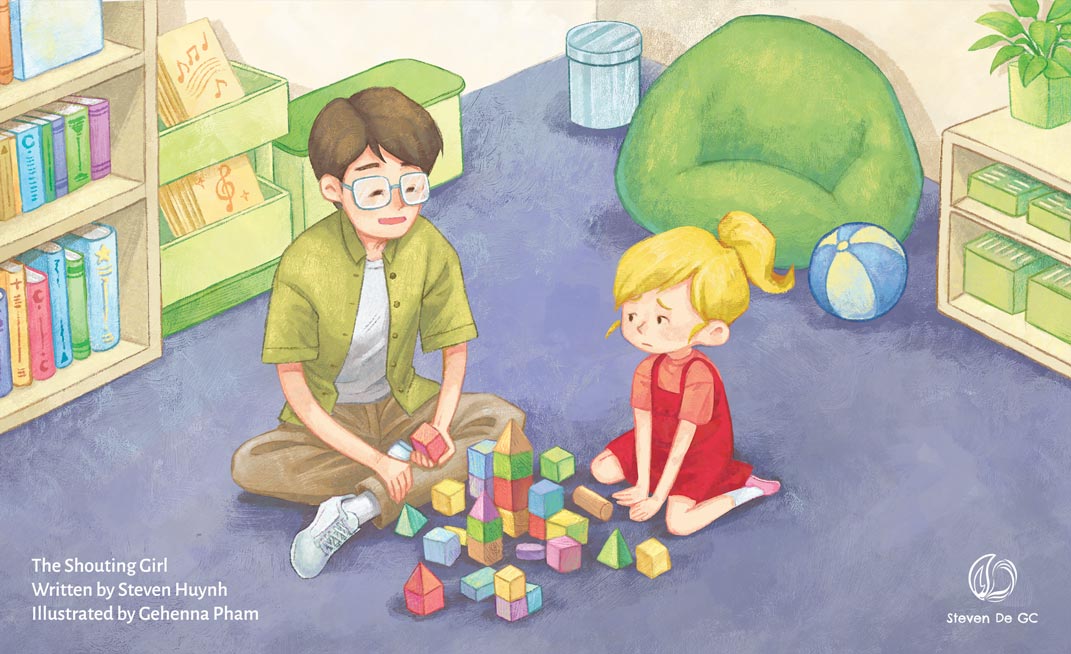
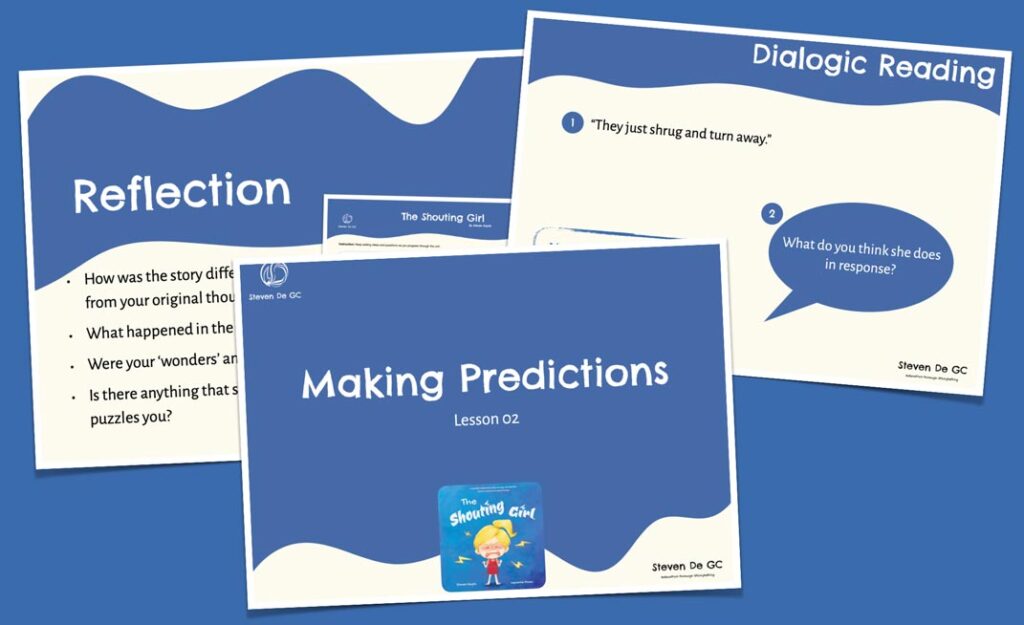
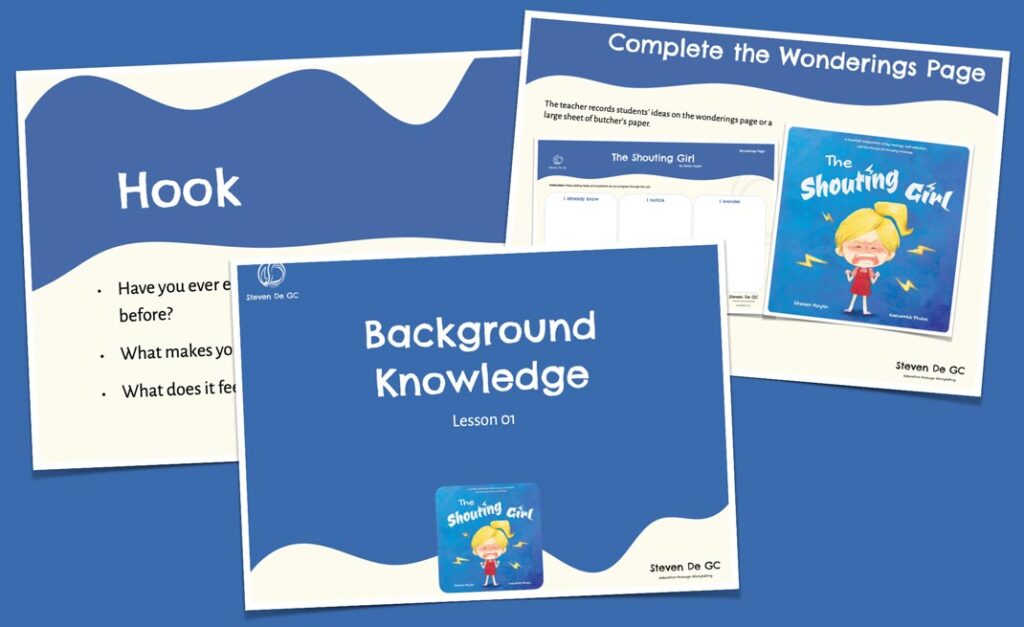
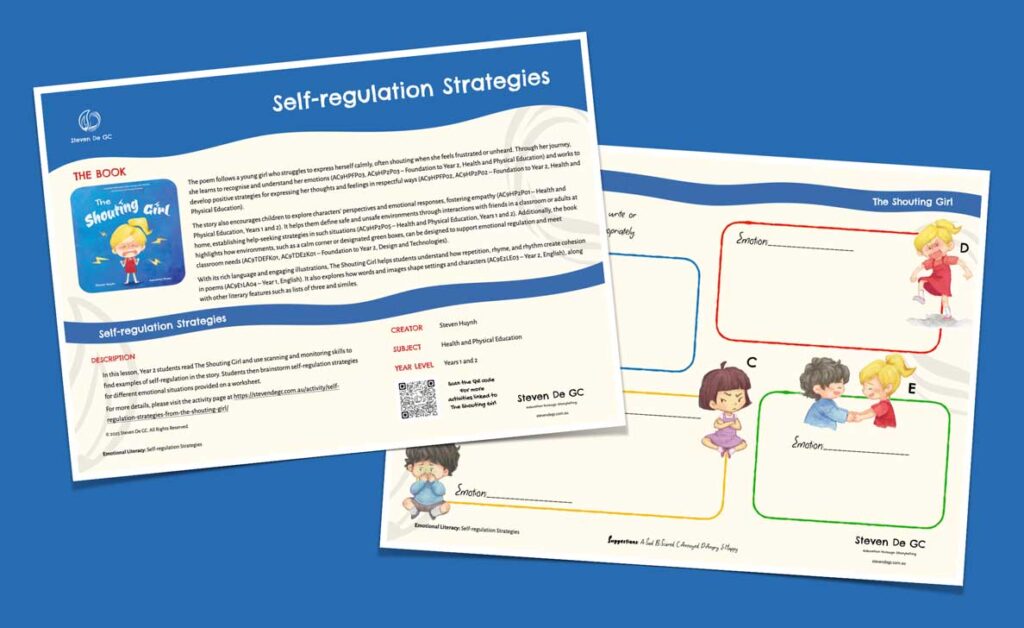

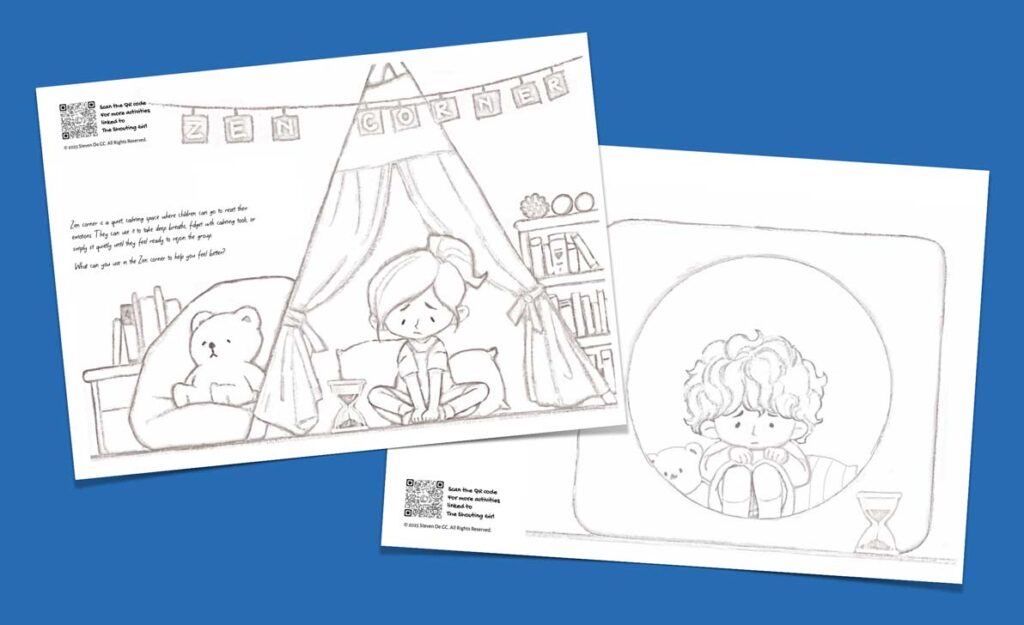
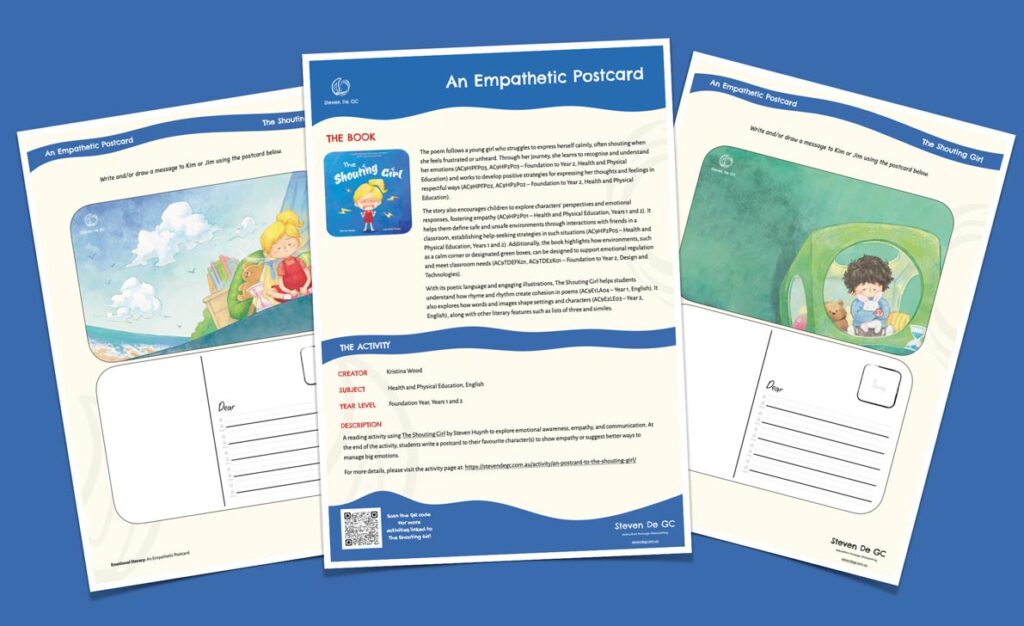
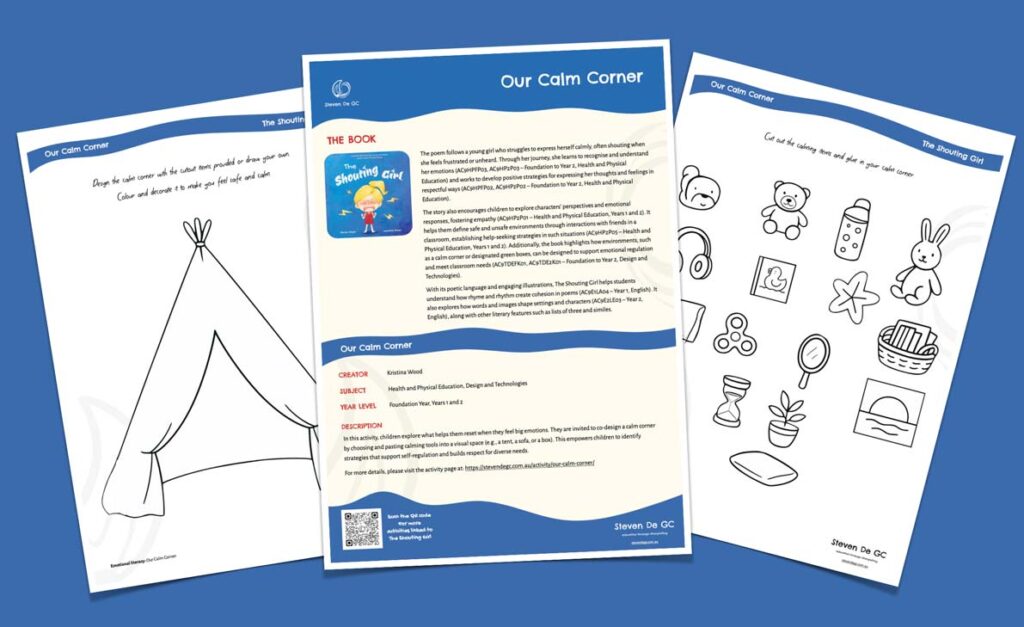
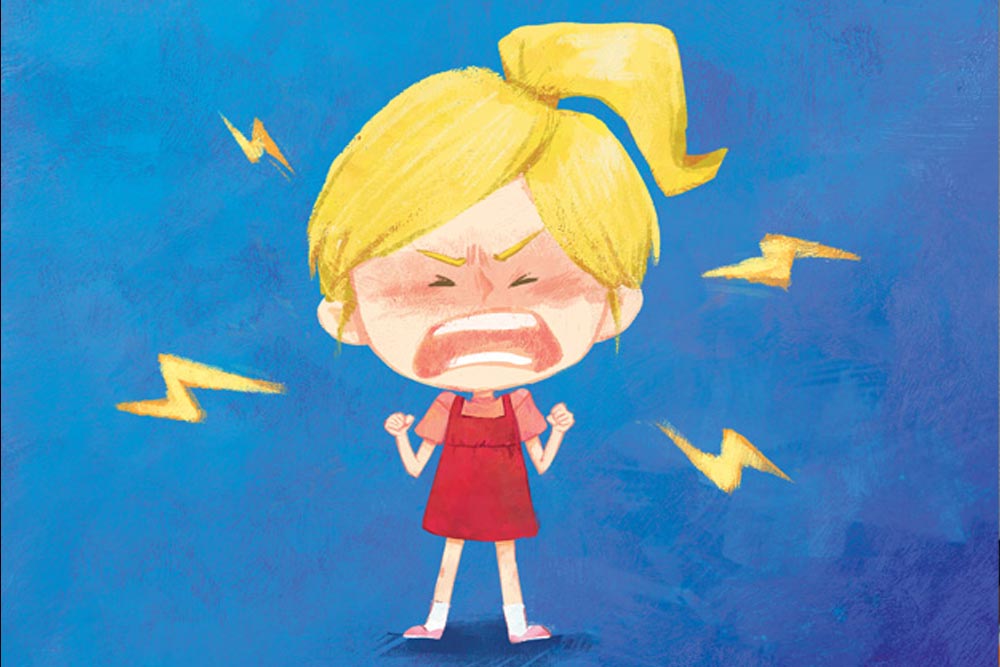


Leave a Reply